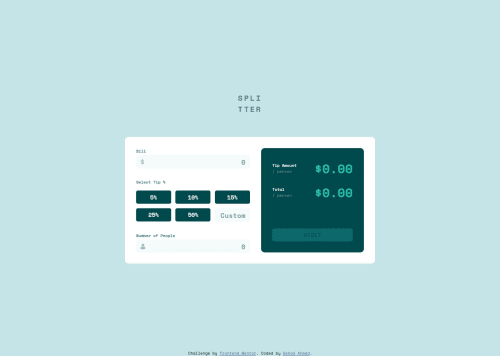
Solution retrospective
Any feedback is welcomed :)
Please log in to post a comment
Log in with GitHubCommunity feedback
- @Papi84
-->Overall Feedback<-- Great work on completing the challenge! 🎉 It’s clear that you’ve put in effort to implement JavaScript fundamentals effectively, and I can see that the project is functional and meets the basic requirements.
-->What’s Working Well<--
- Functionality: Your solution handles the core functionality very well. The JavaScript logic seems solid, and the app performs the necessary operations correctly. The calculation of results (if this is a calculator or a similar interactive challenge) looks accurate and smooth.
- Design: The UI is clean and well-structured. I can tell you’ve paid attention to creating a simple and intuitive user interface, which is always a great user experience.
- Code Structure: Your JavaScript code is well-organized. You’ve broken down the logic in a way that’s easy to follow. I also noticed that your use of functions improves the reusability and readability of the code.
-->Suggestions for Improvement<--
- Error Handling: Consider adding error handling or validation for edge cases. For example, what happens if a user inputs a value that doesn’t make sense (e.g., negative numbers or letters)? Adding simple validation could improve the user experience by preventing unexpected results.
- Accessibility: Improving accessibility can make your project more inclusive. Adding more descriptive
alttext to images, using semantic HTML, and ensuring the app is keyboard-navigable would help make the project more robust for different users. - CSS Improvements: You could also improve responsiveness slightly to ensure that your design scales perfectly across all screen sizes. Adding more media queries or using responsive units like
remor percentages can help.
-->Enhancements<--
-
Additional Features: To take your project to the next level, you could consider adding some interactive features like animations or more detailed visual feedback for user actions. For example, dynamically highlighting input fields, or displaying a real-time preview of the calculations, can add polish to the experience.
-
Code Refactoring: In your JavaScript, you might want to refactor repetitive code into reusable functions. This will make your code more maintainable and cleaner, especially for larger projects.
-->Conclusion<-- Overall, you’ve done an impressive job with this project! The core functionality works well, and your code is easy to follow. A few adjustments in accessibility, responsiveness, and error handling could elevate the user experience even more. Keep up the great work!
Join our Discord community
Join thousands of Frontend Mentor community members taking the challenges, sharing resources, helping each other, and chatting about all things front-end!
Join our Discord